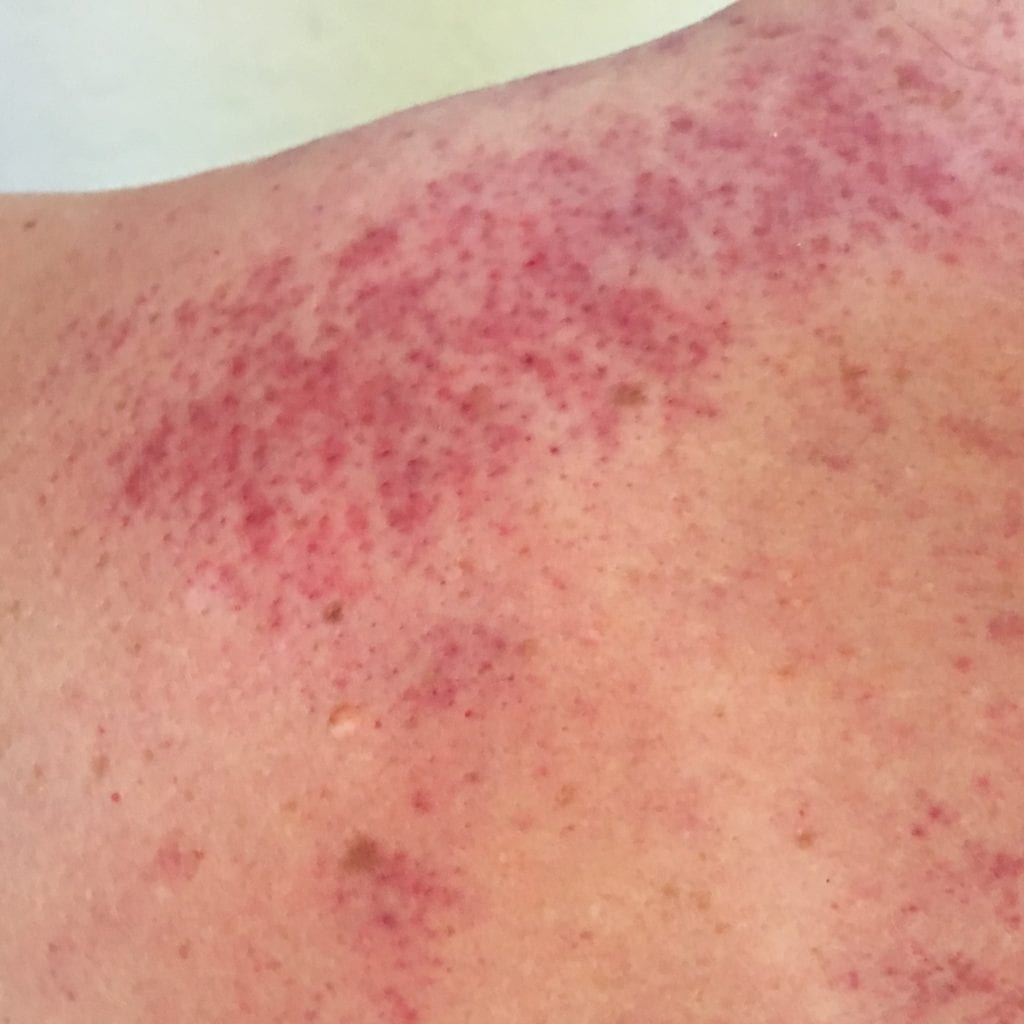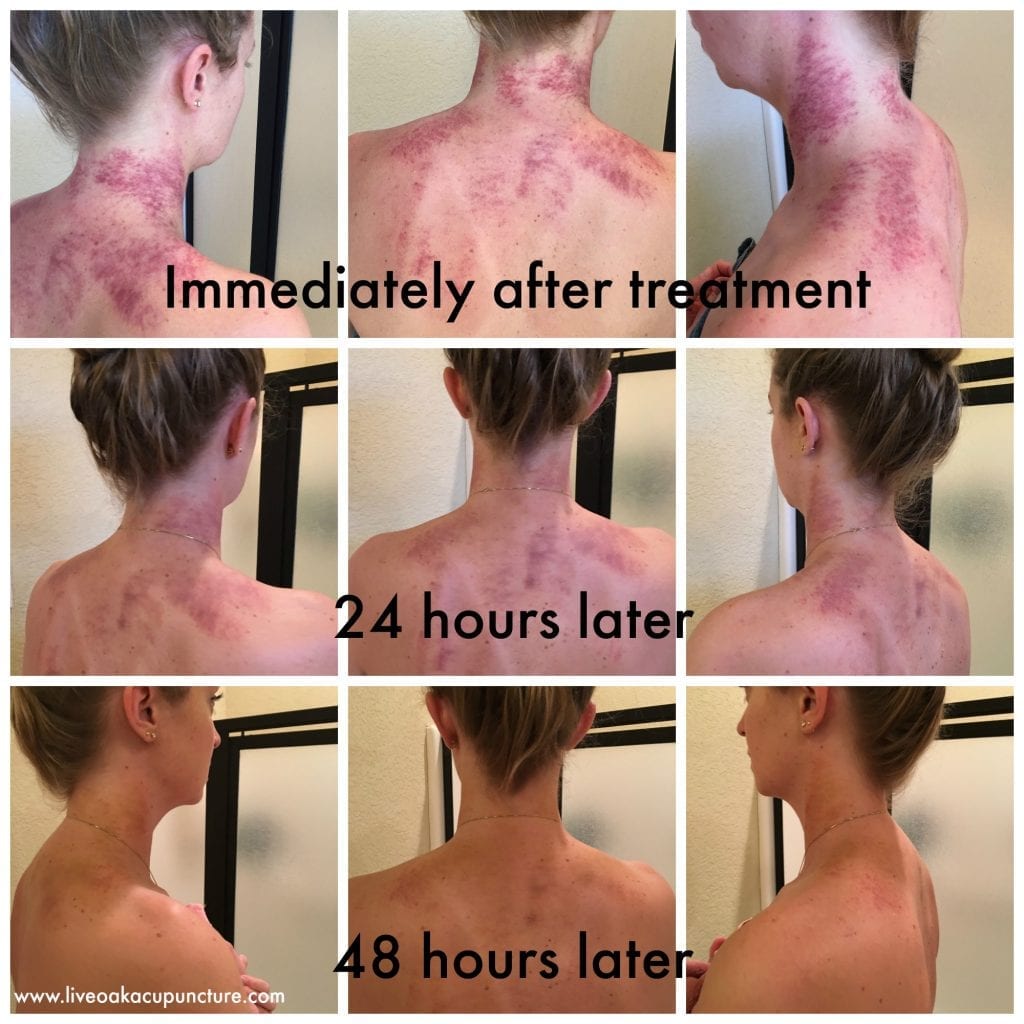GUA SHA
LOOKS SO BAD BUT FEELS SO GOOD
What are the benefits of gua sha?
The benefits of gua sha are numerous. Dr. Arya Nielsen, who is considered to be the Western authority on gua sha, says it is good for “any chronic disorder involving pain or inflammation.”
Gua sha resolves spasms and pain, increases range of motion, and promotes normal circulation to the muscles, connective tissues, and organs. A session of gua sha will often head off an oncoming common cold and can be a huge help in quieting a lingering cough. Research has shown that gua sha causes a four-fold increase in microcirculation of surface tissue, reduces inflammation, and stimulates the immune system. Gua sha also increases the activity of heme-oxygenase-1 (an enzyme that acts to reduce internal organ inflammation). The upregulation of HO-1 partially explains the benefit of gua sha for internal organ problems such as cough, asthma, hepatitis, and liver disease.
What are the benefits of gua sha?
The benefits of gua sha are numerous. Dr. Arya Nielsen, who is considered to be the Western authority on gua sha, says it is good for “any chronic disorder involving pain or inflammation.”
Gua sha resolves spasms and pain, increases range of motion, and promotes normal circulation to the muscles, connective tissues, and organs. A session of gua sha will often head off an oncoming common cold and can be a huge help in quieting a lingering cough. Research has shown that gua sha causes a four-fold increase in microcirculation of surface tissue, reduces inflammation, and stimulates the immune system. Gua sha also increases the activity of heme-oxygenase-1 (an enzyme that acts to reduce internal organ inflammation). The upregulation of HO-1 partially explains the benefit of gua sha for internal organ problems such as cough, asthma, hepatitis, and liver disease.
What happens during and after gua sha?
When performing gua sha, the therapist uses a smooth-edged tool to repeatedly stroke the skin. Gua means “to rub” or “press stroke”. Sha is a term that describes the blood congestion in surface tissue in areas where the patient may experience stiffness and pain; sha is also the term for the little red dots that are raised from applying gua sha. The medical term for the red dots that gua sha causes is “petechiae”. These petechiae represent blood cells that have been pressed outside of capillaries (tiny blood vessels) as the practitioner repeatedly strokes the skin.

The body begins the process of reabsorbing these blood cells immediately and it is this process of reabsorption, along with a dramatic increase in local circulation, that results in the anti-inflammatory, immune-stimulating, and pain-relieving benefits associated with gua sha.
What is the significance of the color of sha and how fast it fades?
The petechiae caused by gua sha range in color from fresh red to dark red, blue, or nearly black. When gua sha is applied at the site of a new or relatively acute problem, the petechiae are usually bright red. This is because the blood stuck in the connective tissue under the skin has not been there for long. In contrast, the petechiae that result when gua sha is applied to an area of chronic pain or injury are often bluish or even black. This is because the blood has been stagnant for an extended period.
How quickly the petechiae fade following gua sha is also significant. In young people with healthy, vital circulatory systems, petechiae fade very quickly. If I perform gua sha on my children in the morning, the petechiae are often nearly gone by the end of the day. In contrast, in older individuals, individuals with sluggish circulation, or in cases of long-standing pain, the petechiae may take nearly a week to fade completely.
What does it look like?
The photos below show how the appearance of sha fades over the course of two days. Individuals will more sluggish circulation may find that it takes longer for the skin to return to normal appearance.

In the days following your gua sha treatment, please keep the following guidelines in mind:
- Until the appearance of your skin returns to normal, avoid exposing the treated area to drafts, direct sunlight, or extremes of temperature.
- In cool or windy weather, wear a scarf to cover the treated area. Wear a shirt to cover the treated area at night.
- Drink plenty of water in the three days following treatment.
- Although the treated area often feels dramatically less painful and more flexible, be aware that the area is vulnerable to re-injury if it is overtaxed by vigorous activity in the days following treatment.

